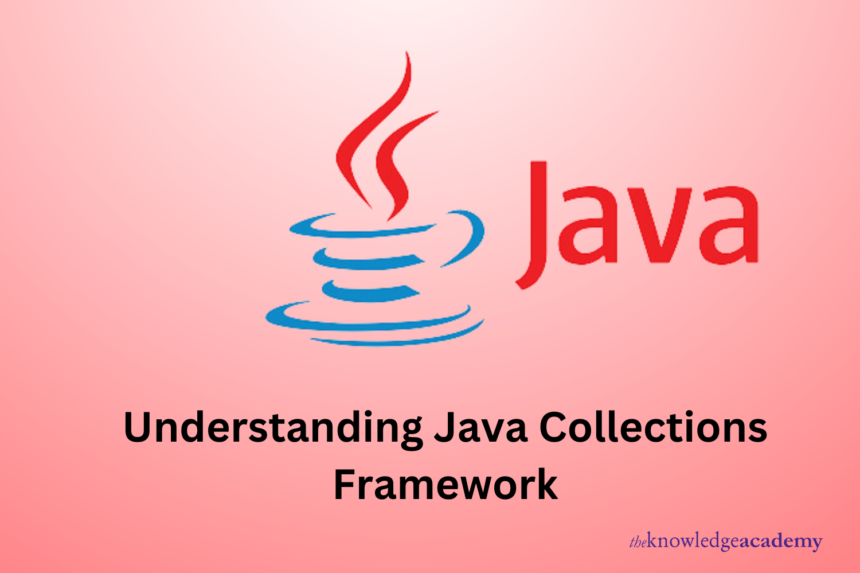The Java Collections Framework is a set of tools and interfaces every developer needs to navigate data manipulation elegantly in the vast world of Java programming. This robust framework offers a uniform design that easily incorporates different collection types, from lists and sets to maps and queues. Mastering the Java Collections Framework allows you to transform your code into an efficient machine. Moreover, understanding Collections in Java can significantly enhance your skill set, making you a more proficient developer and a strong candidate for Java Certification.
This blog explores the Java Collections Framework, covering its main features and how to use it to your advantage in programming.
Introduction to Java Collections Framework
The Java Collections Framework (JCF) is a comprehensive framework for describing and working with data collections. Collections are essential to many Java applications because they allow for data storage, retrieval, and manipulation. The JCF offers a broad range of functions to effectively handle various data manipulation jobs and provides a single interface for working with multiple collections, including lists, sets, and maps.
Key Components of the Java Collections Framework
The Java Collections Framework consists of several fundamental classes, interfaces and algorithms that combine to offer a strong and adaptable framework for data processing.
Core Interfaces
- Collection: It is the collection hierarchy’s root interface. It stands for a collection of items referred to as elements. More specialised sub interfaces like List, Set, and Queue augment the Collection interface.
- List: A sorted grouping that permits duplicate items. Lists offer search and positional access features. LinkedList, Vector, and ArrayList are examples of standard implementations.
- Set: A collection in which duplicate elements are prohibited. Mathematical sets are modelled using sets, which also guarantee uniqueness. A few popular implementations are TreeSet, LinkedHashSet, and HashSet.
- Queue: A grouping of elements kept in reserve before processing. Although this is not always the case, queues usually arrange items in a FIFO (First-In-First-Out) order. Examples of standard implementations include PriorityQueue and LinkedList.
- Map: A thing that ass creates values with keys. Each key in a map can map to a maximum of one value, and duplicate keys are not allowed. A few popular implementations are e TreeMap, LinkedHashMap, and HashMap.
Core Classes
- ArrayList: A resisable array implementation of the List interface. It offers quicker random access but slower insertions and removals than linked lists.
- LinkedList: Implementing the List and Deque interfaces using a doubly linked list. It offers faster insertions and deletions but slower random access than array lists.
- HashSet: The Set interface implementation uses a hash table. It provides constant-time performance for simple operations such as contains, remove and add, provided the hash function distributes elements evenly.
- TreeSet: A red black tree-bas d implementation of NavigableSet. It sorts elements and guarantees log(n) time costs for basic operations.
- HashMap: An implementation of the Map interface based on hash tables. Simple operations provide constant-time performance if the hash function distributes elements evenly.
- TreeMap: A red-black tree-based NavigableMap implementation. It keeps keys sorted in order and guarantees log(n) time costs for fundamental operations.
Benefits of Using Java Collections Framework
The Java Collections Framework is an essential tool for Java developers since it provides several advantages.
- Unified Architecture: The CF lowers the learning curve and streamlines the development process by offering a shared set of interfaces and classes that function together perfectly.
- Reusability: The JCF encourages code reuse and lessens the need to create unique collection implementations by offering a standard collection of interfaces and classes.
- Efficiency: The JCF’s highly optimised data structures and algorithms guarantee effective data manipulation, enhancing applications’ overall performance.
- Flexibility: The JCF offers a variety of collection types and implementations, enabling developers to select the best data structure for their requirements.
- Interoperability: Using the JCF’s standard interfaces and classes, transitioning between various collection types and implementations is simple without modifying the underlying code.
Common Operations in Java Collections Framework
A wide range of operations are available to interact with collections through the Java Collections Framework. The following are some of the often utilised operations:
- Adding Elements: The add, addAll, put and putAll methods can add elements to a collection.
- Removing Elements: The remove, removeAll, clear and removeIf methods can be used to eliminate elements from a collection.
- Iterating Over Elements: The forEach method, extended for-loops, and iterators can all be used to iterate over collections.
- Sorting Elements: Sorted implementations such as TreeSet, TreeMap and Collections. The sort method can be used to sort collections.
- Searching Elements: Within a collection, elements can be found using contains, containsKey and containsValue methods.
- Filtering Elements: The stream API and methods like map, filter, and collect can filter collections.
Best Practices for Using Java Collections Framework
Consider the following recommended practices to get the most out of the Java Collections Framework:
- Select the Appropriate Collection: Choose the best collection type and implementation based on your use case and performance requirements.
- Avoid Raw Types: Use generics to guarantee type safety and prevent possible ClassCastExceptions during runtime.
- Use Immutable Collections: To reduce unintentional changes and enhance thread safety, whenever feasible, employ immutable collections.
- Leverage Utility Methods: The Collections class offers utility methods for typical tasks like sorting, searching, and synchronisation.
- Optimise Performance: Consider the various collection implementations’ performance attributes and select the best fit your requirements.
Conclusion
Java Collections Framework is an element of the Java programming language used to represent an efficient and extensible set of tools for using data collections. By knowing the basic JCF interfaces, classes, and operations and practising the recognised coding standards and guidelines, the proper utilisation of the JCF can be achieved, and the data in a Java project can be controlled and handled effectively. Even if you are already familiar with Java, it is still essential for anyone using Java to fully understand the Java Collections Framework, as it is the strong base for any actual Java coder.















